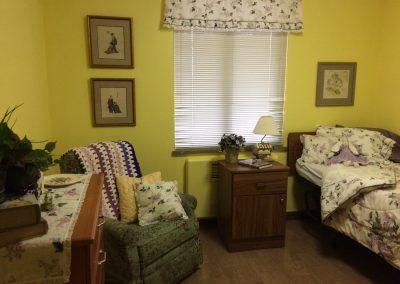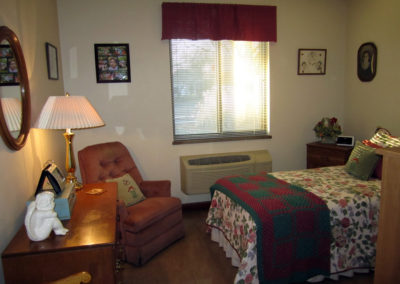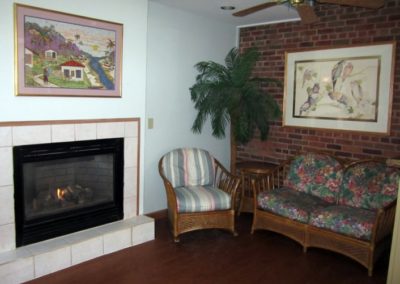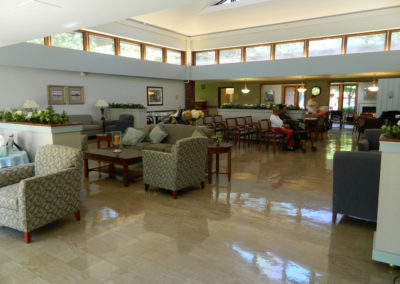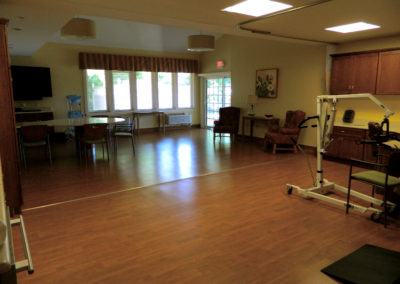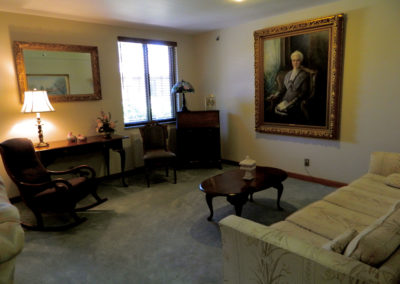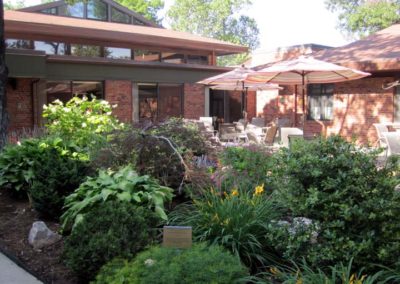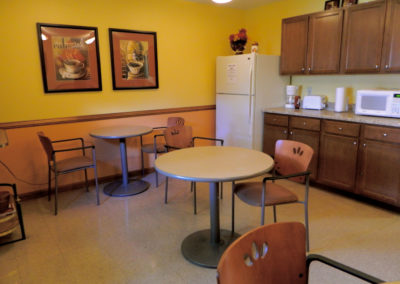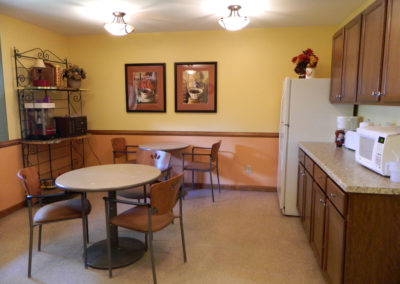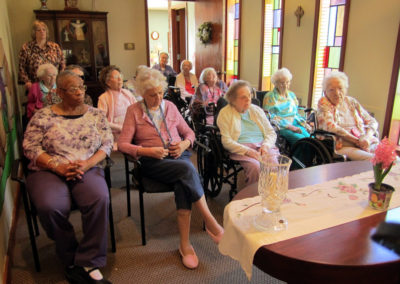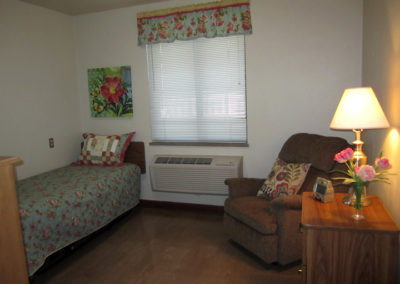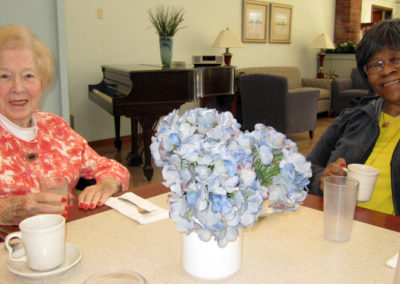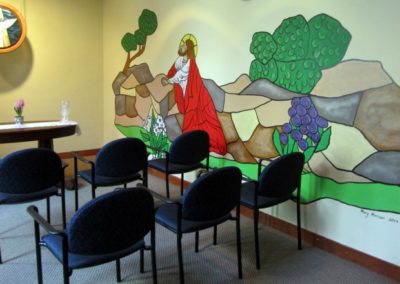Tour the Mary Culver Home
 Residents of the Mary Culver Home enjoy private bedrooms and comfortable common areas, such as the auditorium for formal activities and music programs. They are also welcome to meet family and friends in the parlor, a comfortable living room in the administrative wing. Dining Services staff members serve three meals in the dining area at one end of the auditorium. The ladies can also choose to dine in their rooms, the Cozy Café, or the solarium. The newly renovated dayroom is the hub of daily activities. For those who love fresh air, the front-entry patio with a scented garden and the west courtyard patio garden are easily accessed from anywhere in the building. With just 27 rooms and a simple layout, the Mary Culver Home is easy to navigate.
Residents of the Mary Culver Home enjoy private bedrooms and comfortable common areas, such as the auditorium for formal activities and music programs. They are also welcome to meet family and friends in the parlor, a comfortable living room in the administrative wing. Dining Services staff members serve three meals in the dining area at one end of the auditorium. The ladies can also choose to dine in their rooms, the Cozy Café, or the solarium. The newly renovated dayroom is the hub of daily activities. For those who love fresh air, the front-entry patio with a scented garden and the west courtyard patio garden are easily accessed from anywhere in the building. With just 27 rooms and a simple layout, the Mary Culver Home is easy to navigate.
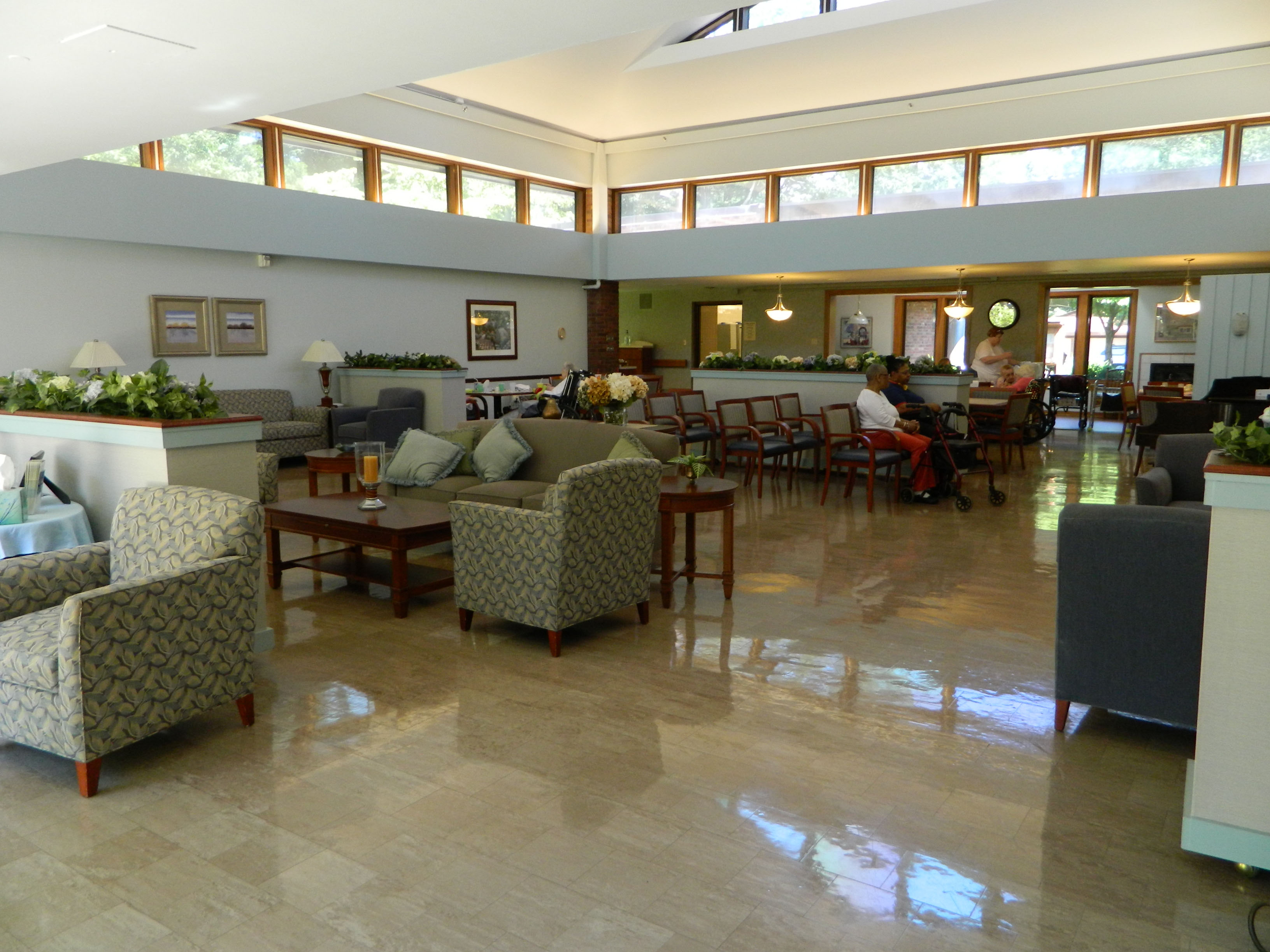 Our Kirkwood Location
Our Kirkwood Location
The Mary Culver Home moved to Kirkwood, Missouri, in 1966, following a search for a homelike setting that could easily accommodate the needs of aging residents of the Blind Girls Home. With fewer young blind women moving into the cavernous house at 5235 Page Avenue, the board of directors followed the trend of migrating to the suburbs.
They purchased three acres of land a few blocks from the business district in downtown Kirkwood. Known as the “Greentree City,” Kirkwood was established in 1853 and matured into a prosperous, friendly St. Louis suburb of 28,000 people and lots of trees. A vibrant business district, an interesting mix of new and historic homes, parks, a top-ranked school district, and an abundance of civic pride characterize the city today.
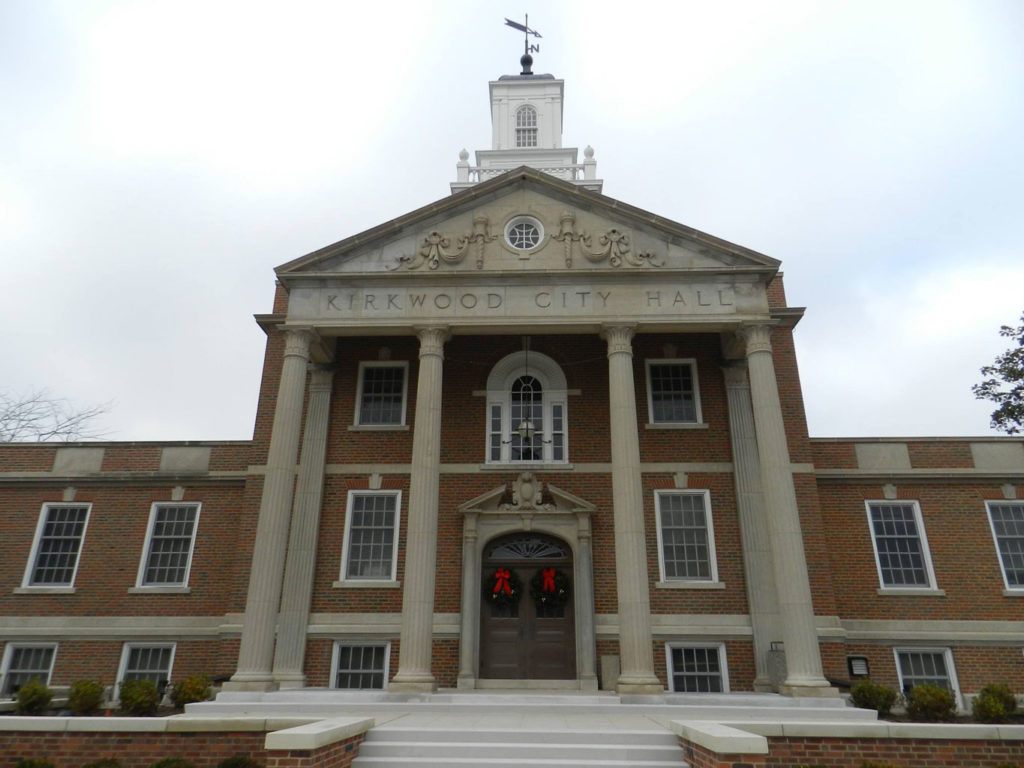 The Mary Culver Home enjoys strong support from community groups such as area churches, schools, volunteer organizations, businesses, and the Kirkwood Des Peres Area Chamber of Commerce.
The Mary Culver Home enjoys strong support from community groups such as area churches, schools, volunteer organizations, businesses, and the Kirkwood Des Peres Area Chamber of Commerce.
Architectural Gem
The Mary Culver Home was designed by famed architect Gyo Obata in the earlier days of his career. He had attended Washington University and studied under the great Finnish architect Eero Saarinen, designer of the St. Louis Gateway Arch. In an interview with Cathy Sivak of architectureschools.com, Obata cited the twin influences of Frank Lloyd Wright and Scandinavian design on his work. The Mary Culver Home certainly reflects those influences. With its prairie-style design and clean lines, the home is well integrated into the landscape. Windows and skylights bring the outdoors into the home’s public spaces.
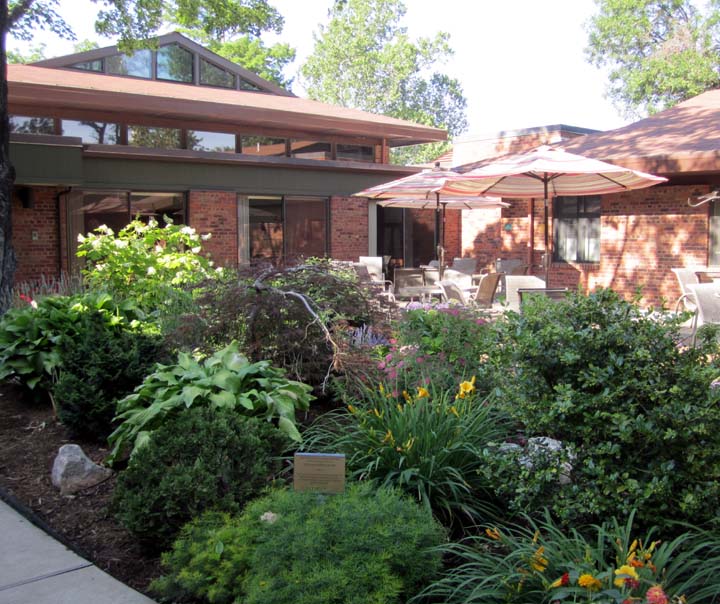 The language that architects use to define space is daylight,” said Obata in his biography.* “Each project offers new potential for discovery, for understanding the site and program, and an opportunity to do a thoughtfully designed building that will bring meaning and enjoyment to the people who will occupy it.
The language that architects use to define space is daylight,” said Obata in his biography.* “Each project offers new potential for discovery, for understanding the site and program, and an opportunity to do a thoughtfully designed building that will bring meaning and enjoyment to the people who will occupy it.
Obata’s firm Hellmuth, Obata + Kassabaum (now known as HOK) grew to tremendous international acclaim with such notable and diverse projects as the National Air and Space Museum in Washington, DC; St. Louis Union Station renovation; the Kellogg Company Headquarters in Battle Creek, MI; the Apple, Inc., 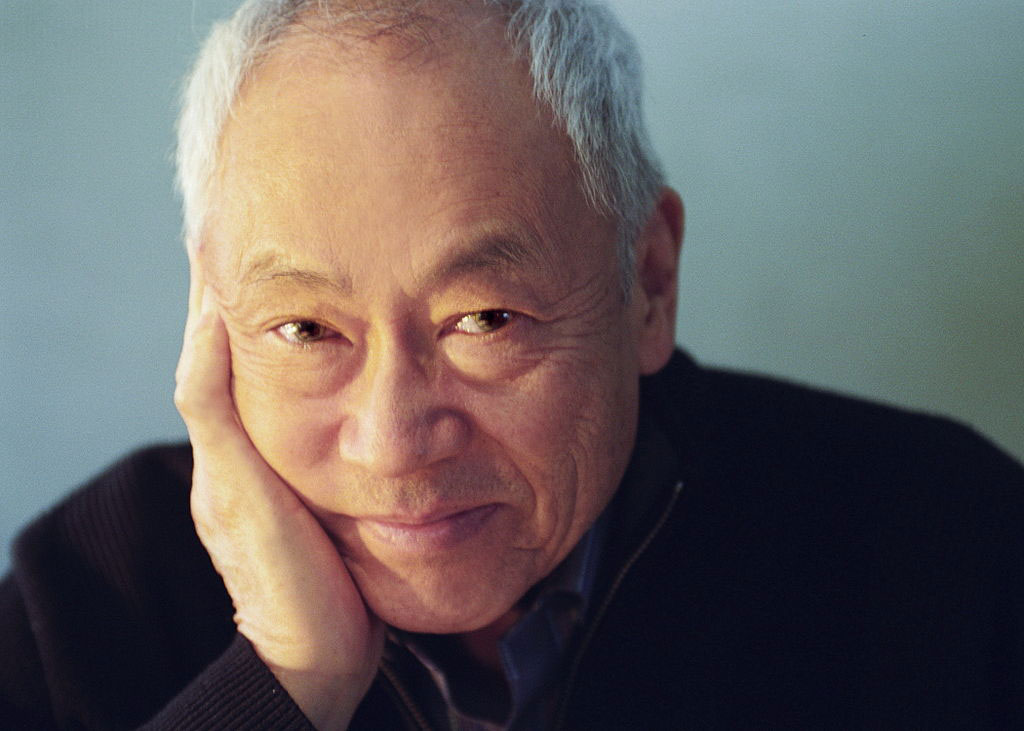 research and development campus in Cupertino, CA; a new terminal of the Indira Gandhi International Airport in Delhi, India; the Salvador Dali Museum in St. Petersburg, FL; the Doha City Centre in Doha, Qatar, to name a very few of the firm’s projects.
research and development campus in Cupertino, CA; a new terminal of the Indira Gandhi International Airport in Delhi, India; the Salvador Dali Museum in St. Petersburg, FL; the Doha City Centre in Doha, Qatar, to name a very few of the firm’s projects.
*Gyo Obata: Architect Clients Reflections, by Marlene Ann Birkman, 2010.
Click on thumbnails below to enlarge photos.


